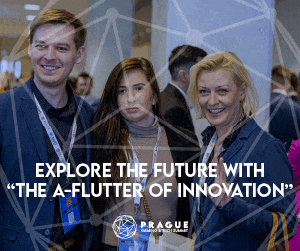In the fast‐evolving world of artificial intelligence, every headline is a signal—an indicator of shifting paradigms, emerging technologies, and strategic maneuvers that promise to redefine the future of digital innovation. Welcome to AI Dispatch: Daily Trends and Innovations, your comprehensive op‑ed‑style briefing designed to dissect the most compelling AI-related news of the day. On February 14, 2025, we spotlight groundbreaking moves from industry titans such as Elon Musk’s audacious bid for OpenAI, the progressive deployment of humanoid robots in the USA, the unveiling of Google’s Gemini AI with its advanced conversational recall, the dynamic debates at the Paris AI Action Summit, and Baidu’s strategic play in the chatbot arena with Ernie DeepSeek.
Over the past 24 hours, the AI landscape has witnessed developments that not only illuminate the rapid pace of technological evolution but also invite us to reflect on the broader implications for business, society, and global governance. In this extensive 7,000-word analysis, we explore these transformative stories, peeling back the layers of corporate strategy, technological ingenuity, and market dynamics that collectively shape the future of AI and machine learning.
By synthesizing insights from multiple reputable sources, our goal is to provide you with a richly detailed narrative that goes beyond surface-level reporting. We delve into the motivations behind these decisions, examine their potential ripple effects, and offer a critical perspective on how each development might influence both the competitive landscape and the regulatory frameworks surrounding AI. This is not merely a news roundup—it’s a deep dive into the forces that are redefining the boundaries of artificial intelligence, machine learning, and emerging technologies.
In the pages that follow, we begin by unpacking the startling news from CNN regarding Elon Musk’s bold bid for OpenAI—a move that could signal a major realignment in the world of AI research and corporate strategy. Next, we turn our attention to a report from Union Rayo that highlights the deployment of humanoid robots in the USA, exploring how this development is set to revolutionize sectors from manufacturing to personal assistance. We then examine The Verge’s coverage of Google’s Gemini AI, a system that promises to enhance conversational recall and elevate user interaction through breakthrough neural network architectures.
Our journey continues with an analysis of Vox’s report on the Paris AI Action Summit, where operator agents and policy-makers are converging to debate the ethical and regulatory dimensions of AI. Finally, we explore Investors’ coverage of Baidu’s latest venture with its AI chatbot Ernie DeepSeek, discussing the competitive stakes involved in the global race for AI supremacy, particularly in the context of rising tensions with industry rivals like Alibaba.
Throughout this briefing, we maintain an engaging, opinion-driven tone designed to not only inform but also provoke thought. Our insights reflect a commitment to understanding the transformative potential of AI—from the disruptive innovations that promise to redefine user experience, to the ethical and regulatory challenges that demand a balanced approach between innovation and oversight.
Join us as we navigate today’s multifaceted AI frontier. Whether you’re a seasoned industry veteran, a technology enthusiast, or a curious observer eager to understand the dynamics of digital transformation, this briefing aims to offer clarity, context, and a forward-looking perspective on the trends that will shape the AI industry in the coming years.
Elon Musk’s Bold Bid for OpenAI: A Game Changer in the AI Landscape
The news that has sent shockwaves through the tech community comes from CNN, where reports indicate that Elon Musk is spearheading a bid to acquire or form a strategic partnership with OpenAI. This move, emblematic of Musk’s history of bold, disruptive strategies, is poised to reshape the competitive dynamics within the AI ecosystem.
Unpacking the Bid
In a market where consolidation often precipitates a surge in innovation, Musk’s proposed bid for OpenAI is more than a mere acquisition attempt—it represents a strategic alignment that could alter the power balance between public and private research institutions. OpenAI, once an open‑source beacon for collaborative AI research, has matured into a formidable player with proprietary technologies that are now at the forefront of natural language processing, computer vision, and autonomous systems.
Musk’s interest, as reported by CNN, is driven by both strategic foresight and a desire to steer the development of AI in a direction that harmonizes with his broader vision of sustainable and ethical technological progress. Critics have long argued that the unchecked proliferation of AI technologies poses significant risks, ranging from ethical dilemmas to potential monopolistic practices. Musk’s bid, therefore, may well be seen as an attempt to recalibrate the ecosystem by injecting a dose of visionary oversight into one of the industry’s most influential organizations.
Strategic Implications and Industry Ramifications
The implications of Musk’s maneuver are vast and multifaceted. First and foremost, such a high-stakes deal could accelerate the pace of innovation within the AI sector by catalyzing a merger of cutting-edge research with entrepreneurial dynamism. By aligning OpenAI’s technological prowess with Musk’s proven track record in scaling disruptive ventures—from electric vehicles to space exploration—the potential for creating synergistic products that leverage AI in novel ways is immense.
From an investment standpoint, the move could herald a period of heightened investor confidence in the AI sector. Historically, when visionary leaders step into the fray with bold propositions, the market responds with optimism, anticipating a wave of innovations that will redefine industry standards. However, this optimism is tempered by the inherent risks associated with rapid technological integration and the regulatory scrutiny that often accompanies such high-profile transactions.
Furthermore, the potential centralization of AI research under the aegis of a single visionary figure raises important questions about the democratization of technology. Will this bid usher in an era where groundbreaking AI innovations are guided by a centralized vision, or will it stifle the diverse, decentralized approaches that have historically driven progress in the field? The answer remains to be seen, but one thing is clear: the move is set to be a lightning rod for debate among policymakers, industry experts, and tech enthusiasts alike.
Operational and Ethical Considerations
The operational challenges of merging two distinct organizational cultures—one rooted in open research and the other in high-stakes entrepreneurship—cannot be underestimated. OpenAI’s foundational principles of transparency and collaborative progress have, until now, set it apart from many of its peers. Integrating these principles with Musk’s more aggressive, market-driven approach will require a delicate balancing act.
Moreover, ethical considerations come to the forefront. With great power comes great responsibility, and the consolidation of AI expertise in the hands of a single visionary can both spur innovation and exacerbate concerns over bias, fairness, and accountability. As the industry grapples with these complex issues, Musk’s bid forces us to confront fundamental questions about who gets to decide the future of AI—and under what conditions.
In our view, while the merger of Musk’s strategic vision with OpenAI’s technological acumen could indeed propel the industry to new heights, it must be managed with a vigilant eye toward ethical governance and long‑term societal impact. The stakes are high, and the road ahead will require not only technological ingenuity but also a robust framework for ethical oversight and regulatory compliance.
Source: CNN
Humanoid Robots on the Move: USA Deployment Signals a Robotics Revolution
In an era defined by rapid automation and advanced machine learning, the deployment of humanoid robots across the USA represents a tangible milestone in the evolution of robotics. A recent report from Union Rayo sheds light on how these intelligent machines are beginning to make their way into everyday operations, from industrial applications to service-oriented tasks, signaling a new phase in the integration of robotics into modern society.
The Dawn of a New Robotics Era
The concept of humanoid robots—machines designed to mimic human form and behavior—has long been relegated to the realms of science fiction and experimental prototypes. Today, however, we are witnessing a convergence of technologies that have transformed this vision into a reality. Powered by sophisticated AI algorithms, advanced sensor arrays, and innovative mechanical designs, modern humanoid robots are capable of performing tasks that were once considered exclusive to human dexterity and cognitive ability.
Union Rayo’s report highlights several pilot programs across major U.S. cities, where humanoid robots are being deployed to assist in logistics, healthcare, customer service, and even public safety. This wave of deployments is driven by the dual imperatives of efficiency and innovation. For industries facing labor shortages and rising operational costs, these robots offer a compelling alternative—one that promises to revolutionize workflows while simultaneously enhancing productivity and precision.
Economic and Social Implications
The integration of humanoid robots into the American workforce is not without its controversies. On the one hand, these deployments signal an era of unparalleled productivity gains and operational efficiency. Industries such as manufacturing, logistics, and even retail are poised to benefit from the 24/7 operational capabilities of robotic systems that can handle repetitive or dangerous tasks with minimal human intervention.
On the other hand, the rapid adoption of robotics raises pressing questions about the future of work, job displacement, and the socio-economic divide. As robots take on roles traditionally filled by human workers, there is a palpable concern about the potential for widespread unemployment and the consequent need for comprehensive retraining programs. In our view, the challenge for policymakers and industry leaders will be to strike a balance between harnessing the benefits of robotic innovation and mitigating its disruptive impact on the labor market.
Technological Breakthroughs and Future Prospects
At the core of this robotics revolution lies a suite of technological breakthroughs that have transformed theoretical models into practical applications. Advances in deep learning and computer vision have endowed humanoid robots with the ability to navigate complex environments, recognize objects, and interact with humans in a natural, intuitive manner. These capabilities are further enhanced by the integration of real‑time data analytics and cloud‑based processing, enabling robots to learn from their surroundings and adapt to new challenges on the fly.
Looking ahead, the implications of widespread humanoid robot deployment extend far beyond immediate economic benefits. In sectors like healthcare, for instance, robots could play a crucial role in assisting with surgeries, providing companionship for the elderly, and even serving as first responders in emergency situations. As these technologies mature, we can expect to see a growing emphasis on creating robots that are not only functionally adept but also capable of empathetic interaction—a development that could redefine the boundaries of human–machine collaboration.
Moreover, the competitive landscape for robotics is set to intensify, as companies around the world vie to develop the most advanced and adaptable humanoid platforms. The USA, with its robust ecosystem of tech startups, research institutions, and venture capital, is well-positioned to be at the forefront of this transformation. However, the race is truly global, and the innovations emerging from international markets will also play a pivotal role in shaping the future of robotics.
Source: Union Rayo
Google Gemini AI: Advancing Conversational Recall and Redefining Interaction
As AI continues to permeate every facet of our lives, breakthroughs in natural language processing and conversational intelligence remain at the forefront of innovation. Today, The Verge reports on Google’s latest endeavor—Gemini AI—a technology that promises to elevate the art of conversation by introducing advanced recall capabilities that enable more natural, context-aware interactions.
Redefining Conversational AI
In an age where digital assistants and chatbots have become ubiquitous, the quest for more nuanced and intelligent conversational agents is relentless. Google Gemini AI represents a significant leap forward in this domain. By leveraging cutting‑edge deep learning algorithms and massive datasets, Gemini AI is designed to “remember” previous interactions and incorporate context from prior exchanges into current conversations. This capability not only enhances the fluidity of dialogue but also enables more personalized and context‑rich interactions that are critical for applications ranging from customer service to virtual personal assistants.
The technology’s advanced recall functions allow it to retrieve and synthesize relevant information from past conversations, thereby minimizing the need for repetitive input from users. This contextual awareness is a game changer in AI-driven communications—it transforms static, transactional exchanges into dynamic, engaging interactions that mimic the natural flow of human conversation.
Implications for User Experience and Business Applications
The rollout of Gemini AI has profound implications for both consumers and businesses. For end-users, the prospect of interacting with AI that “understands” context means a significant improvement in usability and satisfaction. Imagine an AI assistant that remembers your preferences, recalls previous requests without prompting, and seamlessly integrates past interactions into the current dialogue. The result is a more intuitive and humanlike experience that blurs the boundaries between man and machine.
For businesses, the potential applications are equally transformative. Enhanced conversational recall can lead to more efficient customer service operations, as AI agents can handle complex queries with minimal human intervention. In sectors such as e‑commerce, healthcare, and financial services, where timely and accurate communication is paramount, the benefits of deploying an AI with Gemini’s capabilities could be substantial. Moreover, the technology opens up avenues for more sophisticated data analytics, as businesses can gain deeper insights into customer behavior by analyzing the contextual nuances of their interactions.
Challenges and Ethical Considerations
Despite its promise, the development and deployment of advanced conversational AI like Google Gemini are not without challenges. One of the primary concerns revolves around data privacy and the ethical use of personal information. As AI systems become increasingly adept at storing and recalling user data, ensuring that this information is handled securely and transparently becomes paramount. Companies must navigate a complex landscape of regulatory requirements and ethical norms to safeguard user trust.
Furthermore, the ability of Gemini AI to recall past interactions raises questions about data retention policies and the potential for misuse. In an era where cyber threats and data breaches are constant risks, the onus is on technology providers to implement robust security protocols that prevent unauthorized access to sensitive information. In our opinion, while the technological strides represented by Gemini AI are laudable, they must be balanced with rigorous ethical oversight and transparent data management practices.
Source: The Verge
Paris AI Action Summit: Operator Agents and the Future of AI Governance
The international stage for AI policy and governance has been set in Paris, where industry leaders, policymakers, and technologists gathered at the AI Action Summit to debate the future of artificial intelligence. Vox’s in-depth coverage of the summit provides a window into the pressing issues that are shaping AI governance, particularly the emerging role of operator agents—entities designed to manage and oversee AI systems in real time.
A Forum for Global Dialogue
The Paris AI Action Summit emerged as a critical forum for addressing the complex challenges posed by the rapid development of AI. As governments and regulatory bodies worldwide struggle to keep pace with technological innovation, the summit provided an opportunity for stakeholders to come together and chart a path forward. The discussions ranged from ethical considerations in AI deployment to the practical aspects of integrating operator agents into existing regulatory frameworks.
Operator agents, a central theme of the summit, are envisioned as intermediaries that can monitor AI behavior, enforce compliance, and provide a safeguard against unintended consequences. By acting as a real‑time control layer, these agents have the potential to enhance the accountability and transparency of AI systems—a critical need in an era of widespread automation and algorithmic decision‑making.
Implications for Regulation and Industry Standards
The debates at the summit underscored the urgent need for a coordinated, international approach to AI governance. As AI systems become more integrated into everyday life, the risks associated with their deployment—from algorithmic bias to security vulnerabilities—are magnified. The concept of operator agents, as discussed at the summit, is not merely a technical solution but a governance framework that can help ensure that AI systems are aligned with societal values and legal norms.
For industry leaders, the summit served as a reminder that technological innovation must be accompanied by responsible stewardship. The role of operator agents, if effectively implemented, could pave the way for standardized protocols that govern everything from data privacy to operational transparency. However, the path to such standardization is fraught with challenges, as differing national priorities and regulatory philosophies often clash. In our view, the summit’s emphasis on collaboration and dialogue is a positive step towards bridging these divides and creating a unified framework that fosters both innovation and accountability.
The Road Ahead for AI Governance
Looking forward, the outcomes of the Paris AI Action Summit are likely to influence policy debates and regulatory initiatives for years to come. As operator agents become more sophisticated and integrated into AI systems, we can expect to see a gradual shift towards more proactive and adaptive regulatory measures. These measures will need to be dynamic enough to accommodate rapid technological change while robust enough to prevent misuse and ensure public safety.
The summit also highlighted the importance of cross‑sector collaboration—bringing together technologists, ethicists, legal experts, and policymakers—to address the multifaceted challenges posed by AI. In our assessment, this collaborative spirit will be key to developing governance models that are both forward‑looking and grounded in practical realities. As we continue to witness the transformative power of AI, initiatives like the Paris AI Action Summit remind us that technology must always be balanced with thoughtful, principled oversight.
Source: Vox
Baidu’s Ernie DeepSeek and the Race for AI Chatbot Supremacy
In the competitive arena of AI chatbots, Baidu is making headlines with the introduction of Ernie DeepSeek—a next-generation conversational agent that is poised to challenge industry incumbents and reshape the landscape of automated customer interactions. Investors reports provide a detailed look at how Baidu is leveraging its technological prowess to position Ernie DeepSeek as a formidable rival in the global race for AI chatbot supremacy, especially as competition from companies like Alibaba intensifies.
Pioneering Next-Generation Chatbots
Ernie DeepSeek represents a convergence of advanced machine learning techniques, natural language processing, and massive data analytics. Baidu’s innovation in this space is a clear response to the growing demand for AI-driven conversational agents that can understand, learn from, and anticipate user needs with unprecedented accuracy. By integrating deep learning models with contextual recall capabilities, Ernie DeepSeek is designed to offer more humanlike interactions, reducing friction in customer service and streamlining operations across various sectors.
Competitive Dynamics and Market Implications
The development of Ernie DeepSeek comes at a time when the global market for AI chatbots is heating up. With tech giants like Alibaba ramping up their own initiatives, Baidu’s latest foray into conversational AI underscores the intense competitive pressures that are driving innovation in the sector. Investors are closely watching these developments, as the performance of AI chatbots is increasingly seen as a bellwether for broader technological trends and market sentiment in the AI industry.
From a strategic perspective, Baidu’s emphasis on Ernie DeepSeek signals a commitment to not only refining its technology stack but also expanding its footprint in markets where AI-driven customer engagement is becoming a critical differentiator. The stakes are high: the ability to deliver a seamless, intuitive chatbot experience could unlock significant economic value and confer a decisive competitive advantage in the global tech arena.
Challenges and Strategic Considerations
While the promise of Ernie DeepSeek is significant, its deployment is not without challenges. The development of sophisticated chatbots requires continuous innovation in data management, model training, and user experience design. Moreover, issues related to data privacy, algorithmic bias, and system security remain ever‑present concerns that Baidu will need to address proactively.
In our view, the success of Ernie DeepSeek will depend on Baidu’s ability to balance rapid technological advancements with a measured approach to ethical considerations and regulatory compliance. If executed well, this initiative could set new benchmarks in the field of conversational AI, prompting a wave of innovation across industries that rely on seamless digital interactions.
Source: Investors
Conclusion: Charting the Future of AI—Reflections and the Road Ahead
As we close today’s in‑depth briefing on the latest AI trends and innovations, it is evident that the landscape of artificial intelligence is undergoing a profound transformation. From Elon Musk’s bold bid for OpenAI—which promises to reshape research and corporate strategy—to the practical, on‑the‑ground advancements seen in humanoid robotics deployments across the USA, the day’s stories encapsulate a sector in relentless pursuit of excellence and reinvention.
Google’s unveiling of Gemini AI with its advanced conversational recall capabilities illustrates how technological innovations can elevate the human experience, transforming mundane interactions into rich, context‑driven dialogues. Meanwhile, the spirited debates and forward‑looking discussions at the Paris AI Action Summit remind us that the path to innovation must be paved with robust ethical frameworks and collaborative governance. Finally, Baidu’s strategic launch of Ernie DeepSeek serves as a clarion call in the global race for AI supremacy—underscoring both the competitive urgency and the immense opportunities that lie ahead.
In reflecting on these diverse yet interconnected developments, one common thread emerges: the future of AI is not solely defined by technological breakthroughs, but by the complex interplay of visionary leadership, strategic partnerships, and the careful balancing of innovation with responsibility. As AI continues to permeate every facet of our lives—from the boardrooms of Silicon Valley to the smart devices in our homes—our collective challenge is to ensure that progress is both inclusive and ethical, paving the way for a future where technology serves as a force for good.
For investors, policymakers, and technology enthusiasts alike, today’s trends offer both inspiration and a reminder of the challenges that come with rapid change. As we look ahead, the need for agile adaptation, interdisciplinary collaboration, and proactive regulation will be paramount. The innovations we witness today are merely the prelude to a broader transformation—one that will define the socio‑economic fabric of the coming decades.
In our op‑ed‑style analysis, we have sought not only to report on these developments but also to provoke thoughtful consideration of their long‑term implications. The future of AI, with all its promise and complexity, calls for a dynamic dialogue between industry pioneers, regulatory bodies, and the public. As we chart this future together, let us remain committed to harnessing technology in ways that empower communities, drive sustainable growth, and foster a more equitable digital world.
Thank you for joining us on this deep‑dive into the most significant trends shaping the AI industry today. We hope that this briefing has provided valuable insights and sparked new ideas on how best to navigate the ever‑changing frontier of artificial intelligence. Stay tuned for tomorrow’s edition of AI Dispatch, where we will continue to explore the innovations and trends that are redefining our digital future.















Got a Questions?
Find us on Socials or Contact us and we’ll get back to you as soon as possible.